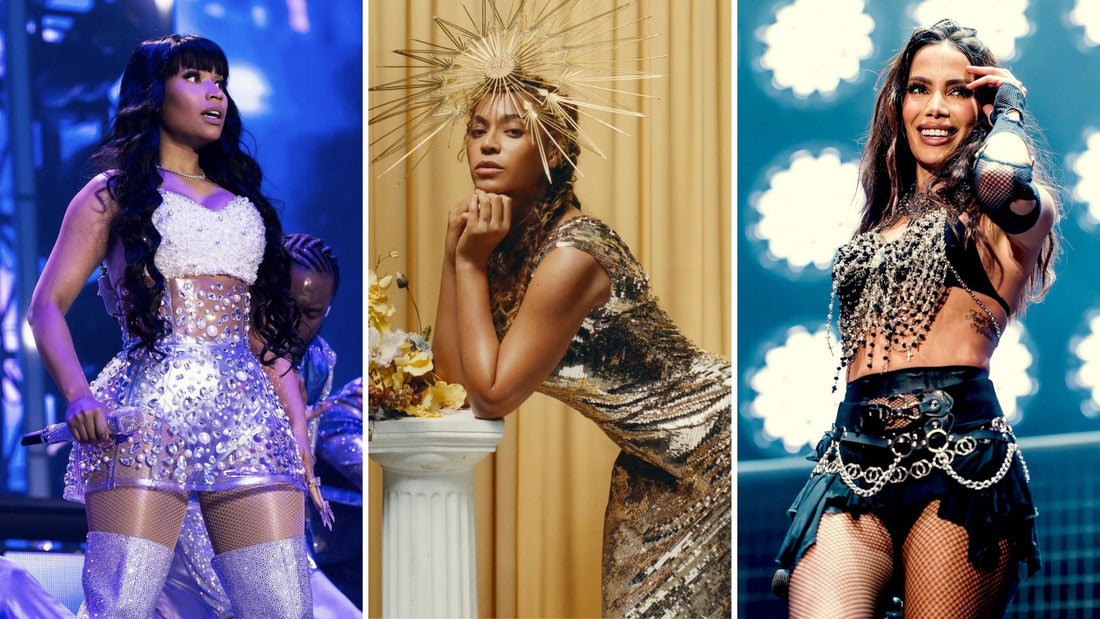New Music Monday: Do Artists Still Make Music Videos?

Last Saturday, Brazilian pop singer Anitta remarked, “Releasing music videos no longer generates returns. People don’t watch music videos anymore. You spend millions of dollars, and nobody watches them.” I’ll admit that after seeing this tweet, I found it quite confusing, considering I was in the middle of a music video binge of Taylor Swift’s videos, immediately followed by Ariana Grande’s.
I love a good Saturday binge of music videos, but according to the comments, apparently, I'm the only one. The general consensus is that music videos are no longer needed to promote songs. For instance, Nicki Minaj’s recent album, Pink Friday 2, released with no visuals and still managed to sell 228k in its first week, while Beyoncé’s Renaissance sold 332,000 equivalent album units in its first week, also with no visuals. Meanwhile, rappers like GloRilla and Megan Thee Stallion, despite spending millions on music videos, were not able to sell more than 150k units combined.

Latto also recently mentioned that her record label, RCA, did not want to produce a music video for her latest single, Brokey, and the audio manufacturing company Bose ended up investing in the project, hence the heavy product placement. But what happened? Many are blaming the downfall of YouTube Music on its competitor Spotify, while others disagree, saying that TikTok is the reason and that users simply aren’t searching up music videos anymore, preferring short-form videos they can surf online.
During the early 2000s, we had MTV’s TRL and shows like 106 & Park, which were the platforms used to bring music videos to the forefront and connect musicians with their audience, making them more personable and human. Nowadays, we have nothing; the closest we can get to having a relationship with our favorite artist is an Instagram Live or watching clips of them on a daytime talk show.
Not only that, but the days of artists introducing their new music video and accompanying song are long gone. Now, it’s a simple tweet and a lyric video on YouTube. The return is minimal—consider that a $10M budgeted music video with 200M views on YouTube can generate about a $400,000 return, which already places the artist in the red. Not to mention, after taxes, the take-home might be around $234,205 on the high end.
Artists like Beyoncé and Taylor Swift have found a sweet spot, with both artists recording their tours and turning them into films to be released in movie theaters and then sold to streaming platforms—therefore seeing a higher return on their investments. Other artists, like Nicki Minaj, perhaps were still in the red with their label for the music videos from past eras, so the PF2 tour likely helped recoup those funds, and thus no music videos were produced this time around.
While some artists can get away with a lower-budget video, others simply cannot, and that’s unfair. Not only that, but the artist is responsible for repaying those funds to their label or management, which places them at a huge disadvantage if there’s no one to front the money. This was the case for Normani, who decided to invest her own money into her Wild Side music video—which was a phenomenal video and song, by the way.
Even Ari Lennox recently took to social media to voice her concerns about her music label and having to pay for her own Google ads to promote her music. So, what’s the outcome? Where and how are music artists supposed to promote their music? Well, as Lisa K. Stephenson of Branndet Marketing Group suggests, “Labels need to be a bit more lenient with their licensing restrictions and the costs associated with them.
There are smaller media outlets and streamers who may not have the $30,000 licensing fee needed to pay for a video, but they have a large following they can effectively market to, getting people used to seeing and hearing the song regularly. With the soundtrack we’re producing for my next book, we will eventually churn out music videos, but the strategy is to partner with smaller creators for promo and a free license to the music. This doesn’t make it royalty-free, but it makes it easier for creators to use and add the music to their content without strikes.”

This means creators can use segments of the music videos for their YouTube intros along with bits and pieces of the songs. Stephenson added, “Again, the larger corporations will soon learn that to see profit, they have to make changes.” Music videos tell a story and are the backbone of songs as a whole. According to TikTok user Terry Toro, “Life before the internet made consuming music or art in general a treat—something you could reward yourself with because you had to go out and buy it.
The singles, the album—you didn’t know what it sounded like before you bought it. You couldn’t preview it unless you went to the Virgin Megastore in Times Square. You really had to go out and do the work. I think the accessibility of art in general makes people not respect it and not value it because it just comes so easily.” He goes on to say, “You can see that in TV and music. Someone can release a body of work, and then by the next week, people are ready for the next thing.”
Overall, like anything in life, if we don’t have to work hard to get it, it won’t hold any value. There are two options here: allow more creators free use of the video content or make the audio music less accessible.
by Diamond Brown










